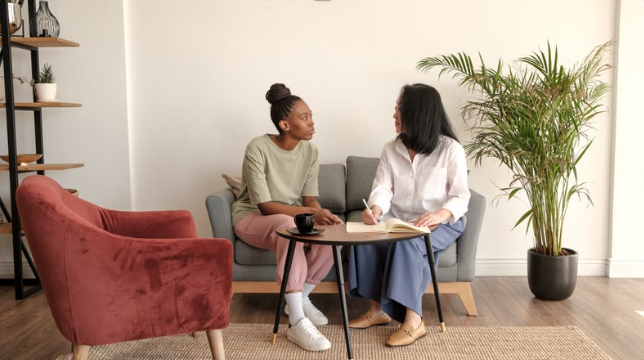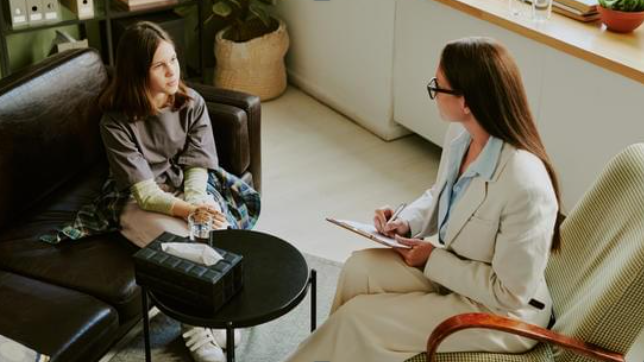
Feeling stuck between needing more support than weekly therapy offers, but not requiring full-time hospitalization for your mental health or addiction?
Intensive Outpatient Programs (IOPs) are designed precisely for this gap, offering a flexible yet structured path to recovery.
For instance, studies show that IOPs can be just as effective as inpatient care for many individuals, providing a crucial middle ground that allows you to continue with daily life while receiving comprehensive treatment.
IOPs provide structured, evidence-based support without removing you from your daily life. In fact, one large study of over 4,700 patients in telehealth-based IOPs found that nearly 91% stayed sober for at least 30 consecutive days during treatment, proving that outpatient care can be powerful.
In this article, we will guide you through understanding what an IOP is, help you determine if it’s the right fit for your unique needs, and empower you with the knowledge to choose a program that truly supports your journey to well-being.
What is an IOP and When Do You Need One?
An intensive outpatient treatment effectiveness depends heavily on the program structure and alignment of patient needs. Thoroughbred’s flexible scheduling provides at least nine hours of therapy each week while letting you stay at home and maintain work or school commitments.
IOPs sit between regular weekly therapy and partial hospitalization in terms of intensity.
You might need an IOP if you’re dealing with:
- Depression, anxiety, or suicidal thoughts that weekly therapy can’t address
- Substance use problems requiring more support than occasional appointments
- Eating disorders needing intensive but not residential treatment
- Recent discharge from inpatient care where you need step-down support
Clinical severity and recent transitions from higher levels of care are the biggest drivers of IOP enrollment.
Many people enter IOPs after emergency department visits, inpatient stays, or when their outpatient therapist recognizes they need more intensive support.
How a Virtual IOP Might Work Better Than In-Person Care?
The pandemic pushed IOPs online, and the results surprised many clinicians. Virtual IOPs often show better attendance and completion rates than traditional in-person programs.
A large study of over 4,700 people in telehealth substance use IOPs found impressive results:
- Nearly 80% stayed engaged for 30 days
- 91% achieved at least 30 consecutive days of sobriety during treatment
- 45% successfully completed the program and no longer needed IOP-level care
Virtual programs work well because they eliminate common barriers like transportation, time off work, and childcare needs.
Patients and clinicians both rated virtual treatment highly, with preference for virtual formats increasing over time.
How to Choose Between In-Person, Virtual, and Hybrid Programs?
The best IOP format depends on your specific situation:
Virtual IOPs work well if you:
- Have reliable internet and a private space
- Need flexible scheduling around work or school
- Live far from treatment centers
- Feel more comfortable discussing sensitive topics from home
- Want to avoid stigma associated with visiting treatment facilities
In-person IOPs might be better if you:
- Need frequent medical monitoring
- Struggle with technology or lack reliable internet
- Benefit from face-to-face group interactions
- Have unstable housing or lack privacy at home
- Require intensive family involvement that works better in person
Hybrid programs combine both approaches and often show the best retention rates because they offer flexibility while maintaining some in-person connection.

4 Key Factors That Influence Your Decision
Choosing the right IOP isn’t just about knowing the formats available, it also comes down to practical details that directly affect your success.
From convenience and cost to family involvement and program quality, these four factors can make or break your treatment experience.
Access and Convenience
Transportation, scheduling conflicts, and geographic distance are major barriers to traditional IOPs.
Virtual options significantly reduce these obstacles. Programs that offer rapid onboarding within 24-72 hours increase the hope you’ll actually start treatment when you need it most.
Insurance Coverage and Costs
Policy changes during the pandemic expanded telehealth coverage, making virtual IOPs more affordable.
Federal parity rules require insurance to cover mental health and substance use treatment at the same level as medical care, but coverage varies by plan.
Family Involvement
For adolescents and young adults, family support is crucial for both enrollment and success.
Programs that include family therapy sessions and education help parents understand the process and support their teen’s recovery.
Program Features to Look For
Quality IOPs should offer:
- Flexible scheduling that works with your daily responsibilities
- Group therapy matched to your age and diagnosis
- Individual therapy sessions
- Medication management if needed
- Crisis support between sessions
- Measurement-based care that tracks your progress with regular assessments

What the Research Shows About Outcomes?
Multiple studies comparing virtual and in-person IOPs find no meaningful differences in clinical outcomes like abstinence rates, depression scores, or quality of life at three-month follow-up.
Some studies even show advantages for virtual care. A study of eating disorder treatment found that depression and suicidal thoughts improved more in virtual IOP patients than in-person patients, possibly because virtual care reduced barriers to consistent attendance.
Programs using measurement-based care with regular questionnaires to track symptoms and functioning, show better completion rates and symptom improvement.
This approach helps clinicians adjust treatment quickly when you’re not improving as expected.
When is an IOP Not Enough? 5 Red Flags to Watch For!
Virtual IOPs aren’t right for everyone. You might need in-person or higher-level care if you have:
- Severe cognitive impairment affecting technology use
- High immediate suicide risk requiring constant monitoring
- Unstable housing without private space for confidential sessions
- Active psychosis or severe mental health crises
- Substance use requiring frequent medical monitoring
Digital divides can worsen disparities for people without reliable internet, devices, or technology skills. Good programs should offer device loans and technical support.
How to Start an IOP Program (5 Easy Steps)?
- Get a referral or self-refer. Many programs accept self-referrals, while others require referrals from doctors, therapists, or hospitals.
- Complete an assessment. Programs will evaluate your clinical needs, insurance coverage, and technology access to determine if IOP is appropriate.
- Verify insurance coverage. Check if the program is in-network and what your out-of-pocket costs will be.
- Prepare for virtual care if needed. Ensure you have reliable internet, a private space, and basic technology skills. Many programs offer orientation sessions.
- Plan your schedule. IOPs typically require 10-20 hours per week across 3-5 days, so coordinate with work, school, or family responsibilities.
Why Does Choosing the Right IOP Matter Now More Than Ever?
Recent policy changes have made virtual IOPs more sustainable, including new rules allowing doctors to prescribe addiction medications through telehealth.
This means people with opioid use disorders can now access comprehensive virtual treatment including both therapy and medication.
The evidence shows that when implemented properly, virtual and hybrid IOPs can deliver outcomes comparable to in-person care while dramatically improving access.
For many people, the choice isn’t between virtual and in-person care, it’s between virtual care and no care at all.
As mental health needs continue rising and provider shortages persist, IOPs that offer flexible delivery options will likely become even more important.
The key is finding a program that matches your clinical needs, practical constraints, and personal preferences while maintaining high standards for safety and effectiveness.
Conclusion
Choosing the right Intensive Outpatient Program (IOP) is a crucial step toward recovery when weekly therapy isn’t enough.
This guide has shown you how to identify if an IOP is right for you, how to weigh the benefits of virtual versus in-person options, and what essential features to look for in a quality program.
With evidence supporting the effectiveness of flexible IOPs, the key is finding a program that aligns with your clinical needs and personal life.
Want to explore your options? Schedule your first IOP consultation today, call us or fill out the form on our website.
At MARR, we’re here to provide the personalized, effective care you deserve, helping you take a confident step toward lasting well-being.
